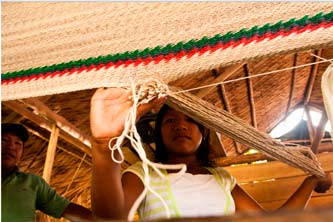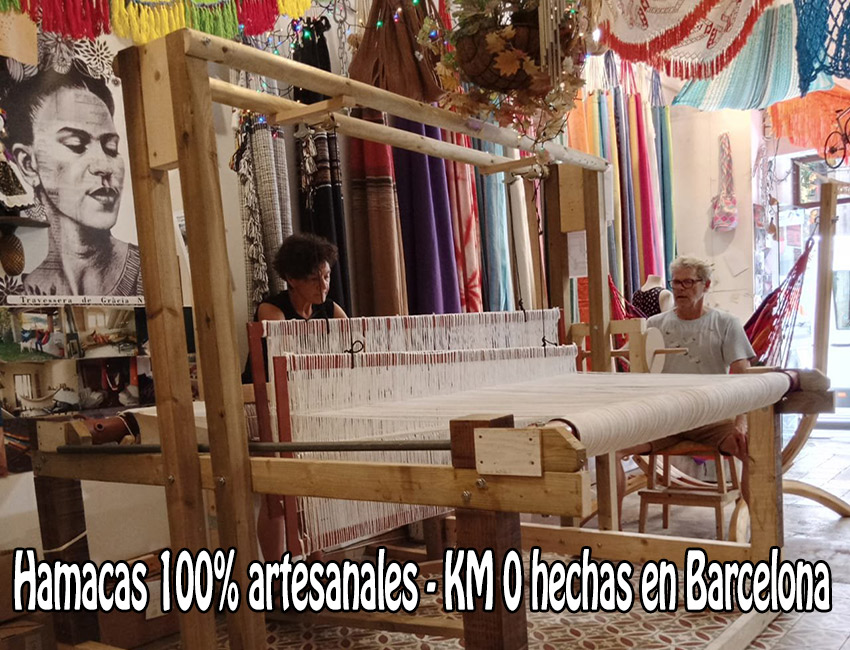FROM THE PLAM TREE THE MORICHE HAMMOCK WAS BORN
In the Orinoco Delta, Venezuela, we find one of the most creative ethnic groups, the Warao.
.jpg)
The Warao create endless objects through their versatile hands among them the moriche hammerhead (Mauritia flexuosa linn) or as they call it "tree of life"
.jpg)
The chinchorro is a hammock that is made with the technique of intercalated tissue, allowing an open and expanding tissue, very good for dry and hot climates.
This chinchorro or hammock is an essential possession of the Warao because he takes it with him when he spends the night outside and accompanies him after he dies as he is shrouded with him.
.jpg)
The Warao women weave the chinchorros on looms from vertical racks at a network point, the threads are formed by twisting one by one the thin strips that have been taken from the leaves of the moriche, previously boiled and dried in the sun.

To moriche, the natives call it "the palm of life", and before cutting their leaves to make use of them, they must make offerings to the anaconda, in charge of protecting the aquatic spaces.
The work with moriche is an autochthonous tradition, rather ancestral, that has passed from generation to generation.
For the Warao ethnic group, the elaboration of the chinchorros or hammocks has been the sustenance of their families for centuries.
Take the heart of the moriche palm and extract the fiber.
Afterwards, it is washed with warm water and lemon to remove the impurities and the slug texture, and once it is well washed it is dried in the sun and then start to spin it.
.jpg)
.jpg)
This yarn is made entirely by hand, rubbing the fibers one by one on the leg, and then join one another if necessary (depending on the size of the hammock) by an intangible knot at its ends; it's an art.
With the armed fibers, the ball of yarn are made and passed to a vertical loom.
It is not easy to get these 100% handmade hammocks but we have the privilege of offering you some pieces that our dear artisans send us and that we consider essential in our collection of hammocks.


